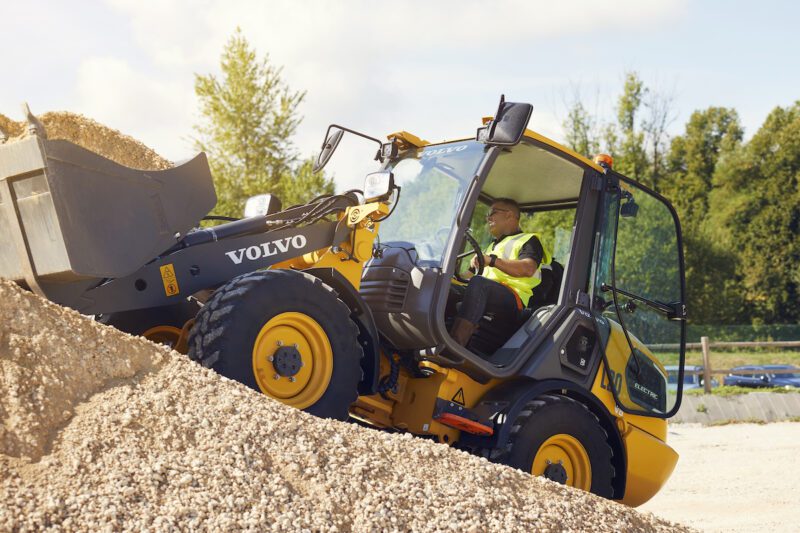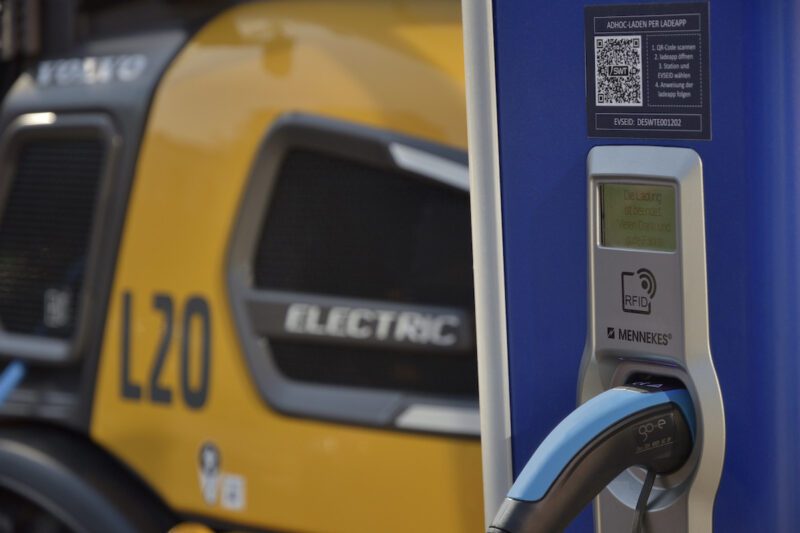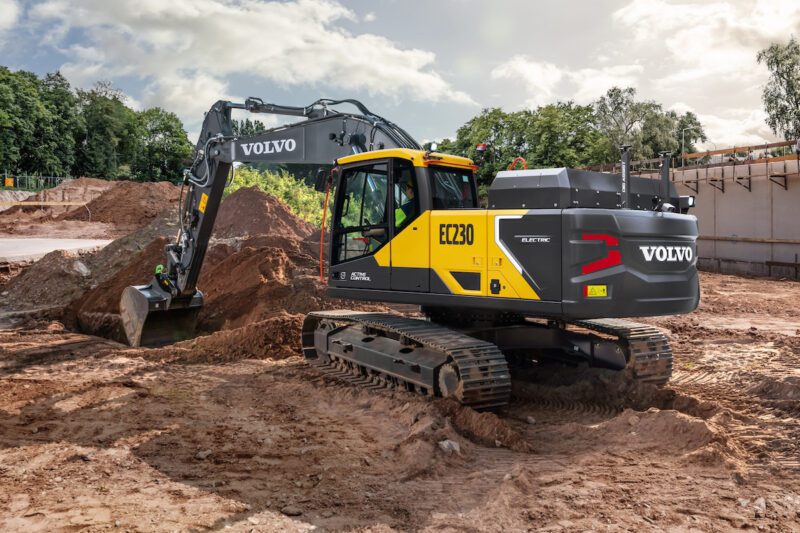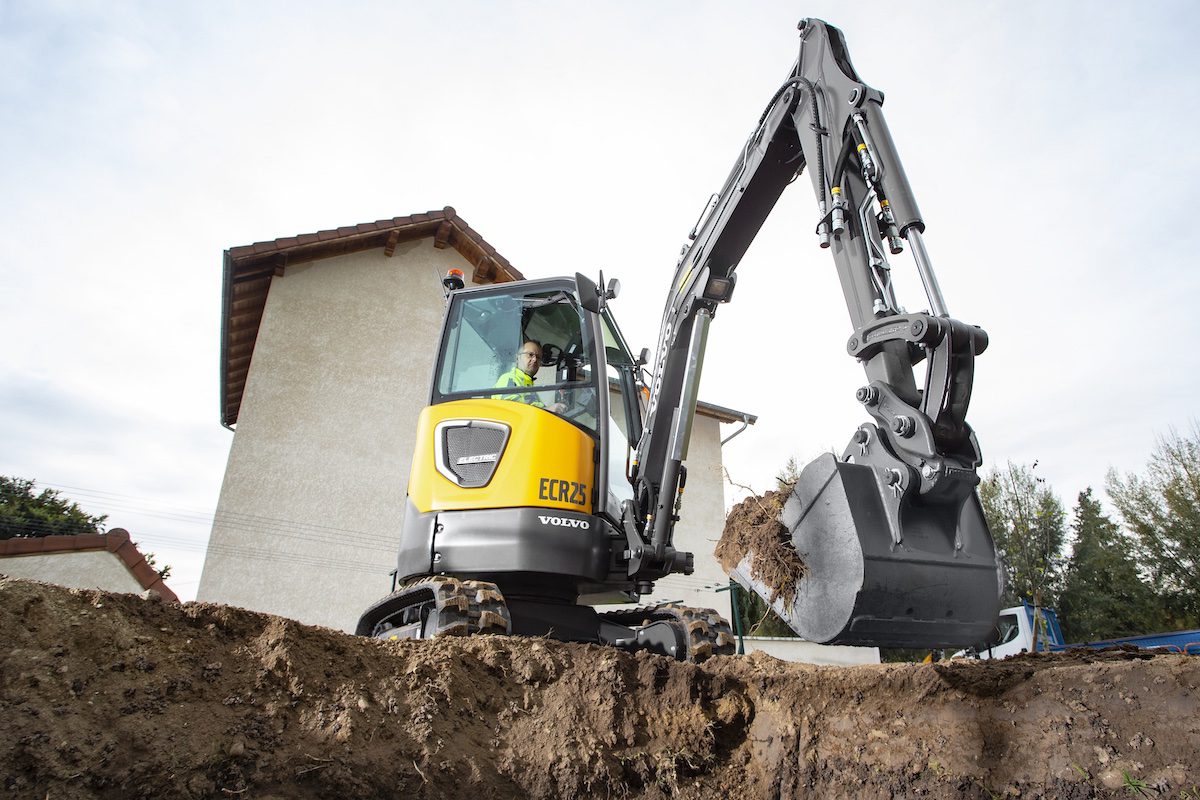When it comes to electromobility, a lot of the early progress has been seen on the roads with vehicles like cars, buses and trucks. But over the past few years, electric vehicles have also been heading off road and onto construction jobsites around the world — even here in North America.
With electric heavy equipment being relatively new, there’s a lot to learn about the off-road electromobility movement. To get you started, these are the top trends we’re seeing today, which can help you determine if and when off-road electric vehicles are a good fit for your fleet.
Compact is an Ideal Entry Point
Most of the electric heavy construction equipment in the market today are compact machines — mini excavators, small wheel loaders, skid-steer loaders and so on. Small machines lend themselves well to battery-electric drive. For example, Volvo puts a 48-volt battery pack in their compact machines, which can store enough energy to perform daily work in typical duty cycles.

A quality electric machine should offer the same performance as its diesel equivalent in light utility work, landscaping, clean up, maintenance, load and carry applications and so on. Compact electric machines are more readily available, and they perfectly complement a diesel-powered fleet to get work done quietly with zero emissions.
Charging Options Are Expanding
There are a variety of ways to charge electric construction equipment. In many cases, the 120-volt and 240-volt outlets found in most buildings will do. There also are products that offer solutions for remote jobsite charging and DC fast charging.
As electric vehicles continue to roll out into the market, improved charging infrastructure will follow suit — and that’s good news for anyone looking to keep their electric equipment running as much as possible.

Consider Off-Road Machines for Fleet Compliance
Right now, many public and private sector organizations are working diligently to determine how to add on-road electric vehicles to meet upcoming fleet requirements. Off-road equipment should be part of that conversation too.
Whether you’re a policymaker evaluating opportunities to migrate toward electric off-road fleets or a fleet manager who has a lot of practical questions about using electric equipment, manufacturers like Volvo can help you evaluate if electric equipment is a smart move.
Valuable Incentives Can Lower Your Costs
If an investment in electric is coming, why not take advantage of the wide range of opportunities to lower the costs? Incentives like tax rebates and grants are available to help with the purchase price, but grants become inaccessible once new regulations require electric adoption.
The earlier you act, the better chance you have to secure funds to help with electric machine purchases.
Larger Machines Are on the Horizon
While most electric heavy construction equipment available today is compact, larger machines are starting to make their way into the market.

Volvo Construction Equipment, for example, has recently introduced its EC230 Electric mid-size excavator— a 22-ton unit that will deliver the same or better performance as its diesel equivalent, but with zero emissions and a lower total cost of ownership. Expect to see more mid-size and larger electric machines in the coming years.
The Takeaway?
If you’ve only been looking at on-road vehicles to meet specific fleet ratio targets, it’s worth your time to look at electric off-road equipment too. Learn more about these groundbreaking machines — and see the Volvo EC230 Electric mid-size excavator — on May 2-4 at ACT Expo 2023 in Booth 5476.
In the meantime, get resources to help navigate regulatory requirements and identify funding opportunities.


